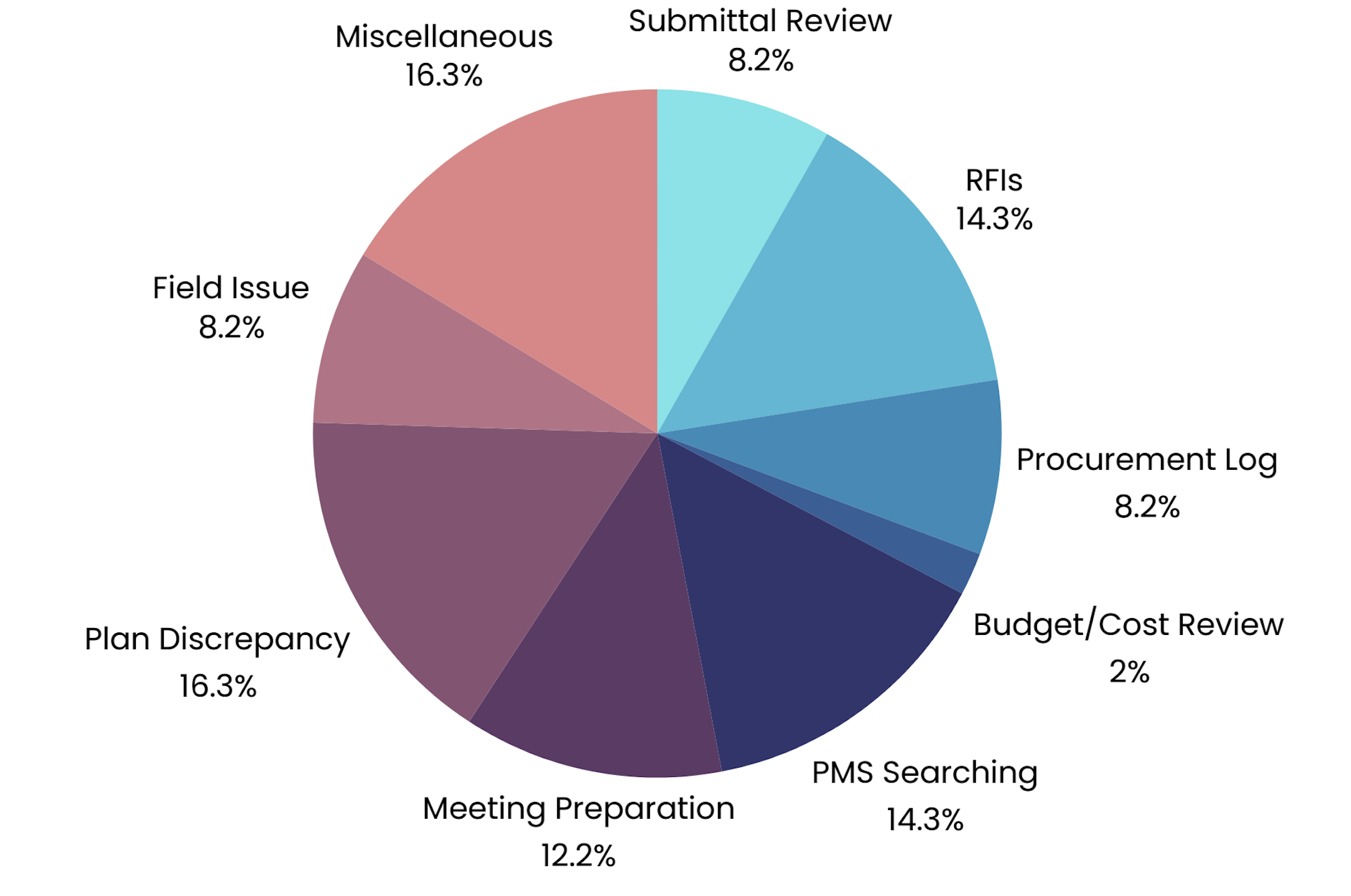
In an effort to better understand the workflow pain points of construction superintendents, project managers and project engineers, tech solutions provider Trunk Tools recently spent 20-plus hours over five weeks shadowing a large tenant improvement project in downtown Boston, collecting data and insights from workers on the ground. The result was a report produced by the company that identifies not only the tasks causing employees the most day-to-day frustration, but what was at the root of those frustrations.

Source: Trunk Tools
A cursory glance at Trunk Tools’ data reveals a number of reported pain points among the professionals shadowed, with the most aggravating tasks including plan discrepancies (16.3%), miscellaneous administrative tasks (16.3%), property management system (PMS) searching (14.3%), creating and managing requests for information (RFIs), and meeting preparation (12.2%); though, nine frustrations were identified altogether.
Trunk Tools data aligns with BuiltWorlds’ own survey data, which, across multiple benchmarking reports, shows a certain level of both self-reported effectiveness as well as considerable room for improvement in regards to preconstruction, field management, and project management and oversight tasks and solution implementation.
The Challenges Behind the Frustration
In analyzing its reported pain points, Trunk Tools identified and broke down seven challenges at the root of the frustrations being experienced—which BuiltWorlds reviewed and further consolidated into two chief challenges: inefficient workflows and poor document management.
Chief Challenge No. 1: Workflow
The primary workflow challenges Trunk Tools identified stem from frequent task switching as a result of “difficulty in finding information or dealing with information asymmetries,” unintegrated tech stacks that required staff to navigate various platforms, and a glut of miscellaneous, time-consuming administrative tasks that overwhelmed office staff.
“Preparing OAC (Owner-Architect-Contractor) and Foreman meetings involved manually compiling lists of overdue RFIs and updating agendas,” the report reads. “These repetitive tasks took up considerable time and could benefit from automation to save time and reduce the likelihood of human error.”
Challenge No. 2: Document Management
Trunk Tools report also identified two primary document management challenges. The first was a result of plan discrepancies, which “accounted for a significant portion of time” wasted by the team.
The report reads, “Resolving these discrepancies required thorough document searches and coordination, highlighting the need for tools that can quickly identify and address discrepancies to avoid delays and rework.”
Submittal reviews were also identified as a “particularly challenging task,” with poor document management at its root.
“Project managers and engineers often struggled to locate the correct documents within large files, making the process time-consuming and cumbersome,” the report’s authors wrote. “This inefficiency increased the risk of errors and omissions.”
Opportunities for Improvements
As Trunk Tools points out in its report, the challenges identified in its five-week shadow reveal ripe opportunities for optimization, particularly through technology—which, again, aligns with BuiltWorlds own research.
When contractors were asked by BuiltWorlds researchers about the frequency in which tech solutions were being utilized for a variety of preconstruction, field management, and project management and oversight tasks, while many reported leveraging solutions for every project, a significant amount admitted to being limited to irregular or a piloting-level of implementation, with some having never implemented a solution at all. A small handful reported being unsure if they were implementing tech solutions for the specific tasks, which may be indicative of additional problems.
Trunk Tools’ report serves as a reminder of construction’s costly and persistent productivity problem—which is reportedly costing the US economy alone $2.8 trillion in lost annual GDP. It can also be seen as a call to action for companies to better understand their own pain points and how improved strategy and informed tech implementation can help overcome, or at least better manage them.

Discussion
Be the first to leave a comment.
You must be a member of the BuiltWorlds community to join the discussion.